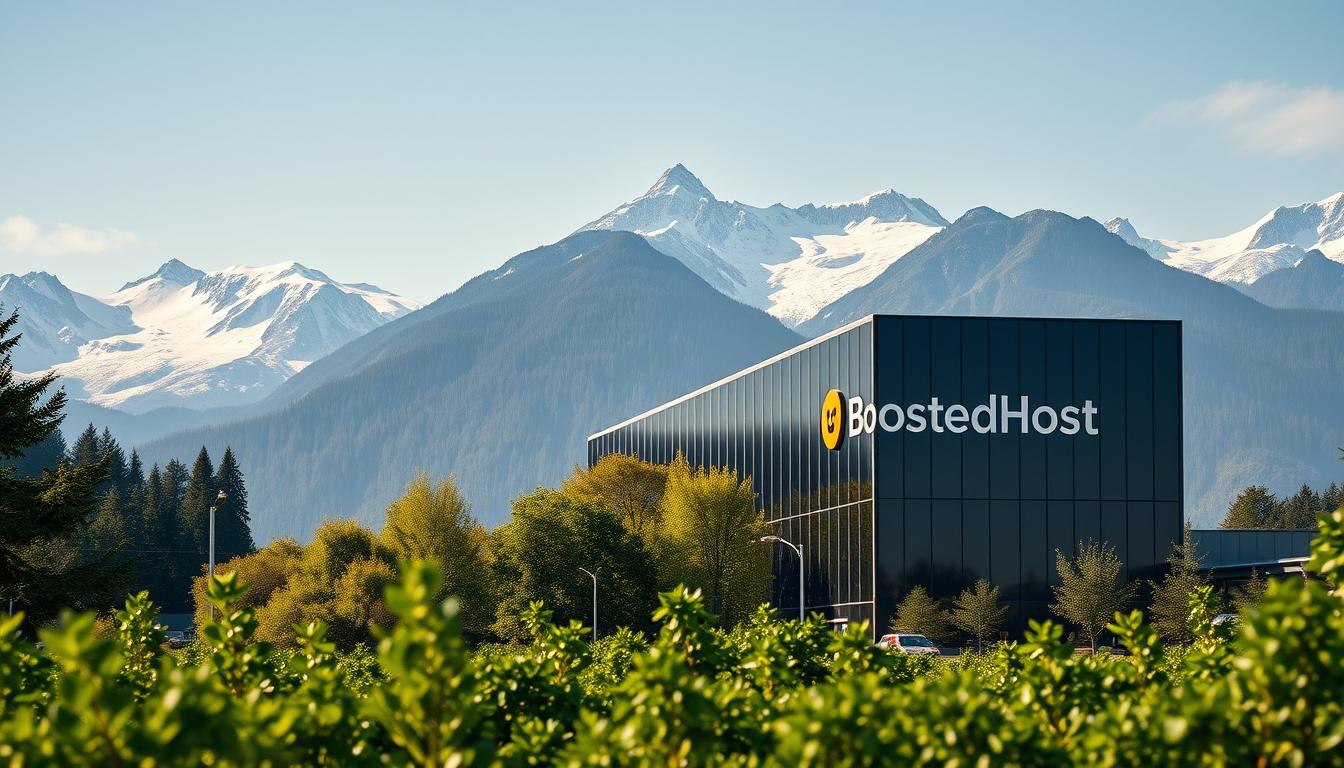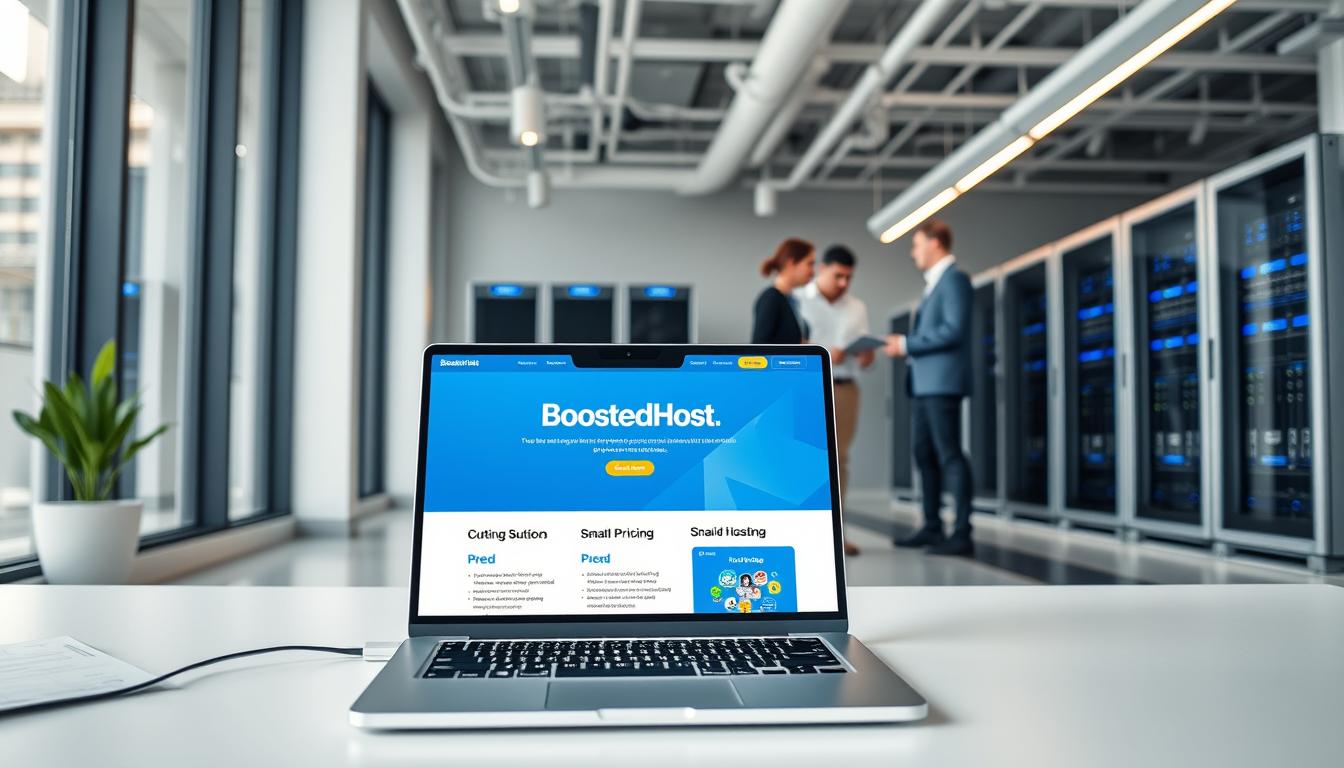We’ve felt the pulse of late-night launches and the sting of slow pages. We know what it costs when a checkout stalls or a campaign fizzles. This comparison cuts through marketing talk so you can decide fast.
We compare BoostedHost GmbH’s ultra-fast LiteSpeed servers, Orbit AI site builder, and transparent pricing against Hivelocity’s custom-stack strengths. We map global data centers, uptime metrics, TTFB performance, and real support response times.
Expect clear outcomes, not fluff: how sub-200ms global TTFB and 99.99% uptime translate to better conversions and SEO. We also show where dedicated hardware and bespoke stacks win for advanced teams.
Key Takeaways
- We focus on performance, reliability, and value to speed your decision.
- BoostedHost’s LiteSpeed stack and CDN deliver real-world speed gains for U.S. traffic.
- Hivelocity excels for buyers who need custom servers and full hardware control.
- Transparent pricing—free SSL, backups, migrations—reduces hidden costs.
- Orbit AI cuts time-to-launch for marketing teams.
- 24/7 support channels matter when minutes affect revenue.
BoostedHost vs Hivelocity at a glance in 2025
Here’s a fast, no-nonsense snapshot to help you pick the right host for your stage of growth. We map who benefits most, the included essentials that cut day-one costs, and the clear trade-offs between all-in-one speed and deep hardware control.

Who it’s best for: individuals, SMBs, agencies, and enterprise buyers
Individuals, SMBs, and agencies: Ideal when you want speedy setup, built-in tools, and predictable costs. Plans include cPanel, free SSL, a free domain on eligible TLDs, free migrations for up to five WordPress sites, and offsite backups.
Enterprise and technical teams: Prefer a provider known for dedicated infrastructure and custom stacks. Recognized by WHTop for long-standing dedicated offerings, this option fits buyers who need raw control over server hardware and networking.
Quick verdict: where each provider clearly wins
Choose the all-in-one option if you value fast launches, Orbit-style AI tools, multichannel support (chat, ticket, phone, Discord, WhatsApp), and bundled essentials that reduce short-term costs.
Pick the dedicated-infrastructure route if you require bespoke tuning, larger cores, and fully custom operating environments. We also note that semrush-driven SEO work benefits from sub-200ms TTFB and a nearby U.S. endpoint when web performance matters most.
- Cost-saving inclusions: SSL, domain offers, migrations, email basics, backups, CDN, and cPanel access.
- Support: Human-first, multichannel help that resolves many issues in minutes versus traditional ticket flows.
- Match by growth: Fast, managed services for growing teams; bare-metal control for enterprise scale.
Speed and real-world performance: LiteSpeed vs bare‑metal power
Speed decides conversions — and the right stack wins where seconds cost dollars. We test both managed LiteSpeed setups and raw hardware to see what actually moves the needle for U.S. audiences.

BoostedHost: LiteSpeed, CDN, and container isolation
We praise the LiteSpeed Web Server and built-in caching for lowering first-byte time. Combined with Cloudflare DNS and a global CDN, the result is consistent sub-200ms TTFB and 99.99% uptime.
Container isolation keeps noisy neighbors from stealing CPU or RAM. That protects sustained throughput for each site and speeds page loads on mobile networks.
Hivelocity: instant dedicated hardware and custom stacks
Dedicated choices shine when teams need raw power and custom kernels. hivelocity instant servers let specialists tune OS and modules. For niche frameworks, analytics, or game servers, bare‑metal power often wins.
When time matters, instant servers deploy and servers deploy minutes — ideal for launches that need full control.
What matters for U.S. audiences
- Pick a nearby server location-united states📜 — round trips drop and Core Web Vitals improve.
- Size RAM and caching layers to handle promo bursts without slowdowns.
- Use CDN points of presence to reduce latency across devices and improve the page experience.
Uptime reliability and SLA confidence
Availability matters — a stable site keeps customers, search bots, and teams calm.
99.99% average uptime translates into measurable savings. That figure limits downtime to roughly 4 minutes monthly. Fewer outages protect revenue and reputation. It also keeps search crawlers returning on schedule.
Container isolation plays a direct role. By isolating each server environment, noisy neighbors cannot consume shared CPU, memory, or I/O. That stabilizes page response during traffic spikes.
Where dedicated networks matter
We credit hivelocity for a strong network pedigree in dedicated and colocation workloads. Single-tenant control matters for latency-sensitive services and complex routing needs.
“Reliable uptime and fast restores matter more than theoretical SLAs — recovery time decides business continuity.”
- Business math: 99.99% = ~4 minutes downtime/month — less lost revenue and fewer support tickets.
- Isolation: Reduces cross-tenant impacts on performance.
- Failover hygiene: Offsite backups and quick restores beat long SLA claims.
- SEO impact: Stable availability supports crawl consistency and SEMrush-tracked rankings.
| Attribute | Managed container service | Dedicated/colocation network |
|---|---|---|
| Average uptime | 99.99% advertised | Enterprise SLAs possible |
| Isolation | Per-container limits prevent noisy neighbors | Single-tenant hardware — full resource control |
| Backups & recovery | Offsite daily/weekly, fast restores | Flexible backup policies, custom restore paths |
| Best for | Sites needing predictable performance and quick launches | High-control workloads and specialized network needs |
Pricing transparency and total cost of ownership
We value clarity: know what you pay now and what renewals will cost later. Predictable bills keep teams focused on growth, not surprise invoices.
BoostedHost: bundled essentials that shrink TCO
Starter prices are competitive: Launch $2.35/mo (renews $9.95), Accelerate $3.35/mo (renews $14.95), Starlight $7.95/mo (renews $19.95).
Included: free SSL, free domain on eligible annual plans, free migration for up to five WordPress sites, daily/weekly offsite backups, and unlimited bandwidth (FUP).
These inclusions remove many add-on fees most teams face with separate services.
Dedicated pricing variables and add-ons
Dedicated server costs vary with CPU, RAM, storage space, port speeds, and IPs. Add backups, security, and monitoring — and monthly totals rise.
For heavy workloads or reseller plans, factor in custom SLAs and contract terms before you sign.
Renewals, overages, and fine print to watch
- Renewal step-ups: Intro rates often jump; model renewals in your TCO worksheet.
- Overages: Bandwidth or port upgrades can change costs mid-cycle.
- Reseller and contract terms: Check cancellation windows and true support SLAs.
| Item | Included (managed) | Typical add-on (dedicated) |
|---|---|---|
| SSL & domain | Free on eligible plans | Paid or self-managed |
| Backups | Daily/weekly offsite | Custom frequency for fee |
| Bandwidth & port | Unlimited (FUP) | Metered, selectable speeds |
| Support & SLAs | 24/7 multichannel | Tiered enterprise SLAs |
Use a semrush-informed traffic forecast to size resources. Compare apples to apples: include storage, backup, and management services when you total cost for web hosting choices.
Included features that impact ROI from day one
The right bundled features turn setup work into minutes instead of hours. That matters when launches, promos, or client deadlines are tight. We look at what ships with plans and why each item reduces tool sprawl and cost.
Free essentials: SSL, backups, malware, email, CDN
Free SSL keeps sites secure and search-friendly from day one. No extra purchases. No install delays.
Daily or weekly offsite backups protect against data loss. Daily cadence is best for active stores. Weekly works for brochure sites.
Malware scanning and isolation stop cross-account contamination and shrink attack surfaces. That lowers downtime costs and recovery work.
Control panel and developer tools
cPanel workflows let non-technical staff manage databases, DNS, and files with confidence. Familiar panels cut onboarding time for agencies and pros.
- Built-in CDN and Cloudflare DNS reduce latency for U.S. visitors and save on third-party fees.
- Developer options—PHP selector, Node.js, Python, Git/SSH—keep deployments fast for pro teams.
- Plan space and storage rules: monitor usage and upgrade before limits slow growth.
Bottom line: these inclusions speed time-to-value. Good hosting bundles act like ready-made tooling for launches, support, and SEO—so teams move faster and spend less.
AI tools and automation: Orbit vs traditional setups
Build a professional site from a simple brief—finished, hosted, and SEO-ready—within five minutes. That speed changes how teams plan launches.
Every plan includes Orbit—an AI website builder that assembles a WordPress site fast. It pairs an AI writer, image generator, blog generator, and AI SEO tools in one console.
Orbit AI: launch a polished site in under 5 minutes
We turn a brief into a working WordPress site quickly. Templates, content blocks, and on-brand visuals are auto-populated.
Result: fewer setup hours, fewer vendor logins, and lower costs for basic web projects.
Faster content lifecycles with integrated AI tools
- AI writer and image generator fill pages with on‑brand copy and visuals.
- AI blog generator accelerates editorial calendars and aligns output with semrush keyword targets.
- Built-in SEO tools suggest meta, headers, and keyword placement for faster optimization.
Automation handles drafts and structure. Human review still vets brand voice, legal compliance, and final edits.
| Feature | Orbit (integrated) | Traditional setup |
|---|---|---|
| Time to first draft | Minutes | Hours–days |
| Content + images | AI-generated, cohesive | Multiple vendors and uploads |
| SEO alignment | Built-in semrush-informed suggestions | Manual research and tools |
| Best for | Small teams, agencies, pro launches | Custom builds needing deep engineering |
Bottom line: Orbit cuts build cycles and reduces reliance on external services. For many U.S. projects, that means faster launches and lower TCO while keeping the option to move to custom server work when needs grow.
Support responsiveness and channels you can actually reach
When minutes matter, support becomes a business advantage — not just a checkbox. We treat support as part of the product. Fast, human help reduces lost sales and stress.
24/7 expert support is available across live chat, ticket, email, phone (+41 44 500 40 65), Discord, and WhatsApp. Most routine issues resolve in minutes. Complex digs move to a ticket for full diagnostics.
Which channel to use and why
- Live chat — quickest for config tweaks, cache clears, and login help.
- Phone / WhatsApp — call when an active checkout or server outage costs revenue now.
- Ticket / email — use for deep logs, audit trails, and escalation to senior engineers.
- Discord — good for real-time updates with a group or agency team.
We rely on real people, not script-following bots. That means expert troubleshooting and clear next steps at any hour.
Expected response times: chat/phone in minutes for urgent incidents; tickets answered fast and escalated when mission-critical. If downtime affects sales, escalation routes activate immediately.
“Shaving minutes off support cycles protects revenue and reputation — every minute saved matters.”
Global data centers and U.S. latency considerations
Geography still drives speed: where you place a server decides how fast your pages feel.
Wide footprint matters for global audiences. Our provider offers data centers in the United States, Germany, the United Kingdom, Switzerland, Japan, Singapore, and more. This spanning data-centres worldwide approach lets you pick the nearest region for lower round-trip times and better Core Web Vitals.
BoostedHost locations and choices
Choose a nearby location to cut latency and improve conversions. Use semrush geo reports to confirm where visitors come from before you pin a region. That saves time and reduces surprise traffic patterns.
Hivelocity strengths in the United States
For single-tenant or colocation buyers, strong server location-united states📜 options and network reach matter. Hivelocity instant servers and instant servers deploy quickly for pilots and heavy workloads.
Picking the right region
- Proximity improves speed and conversion rates — keep your audience close to the server.
- Data residency and compliance demand specific location-united states📜 description-info for regulated sites.
- Consider deploy minutes data-centres and deploy minutes enterprise when planning multi-region rollouts or hybrid cloud designs that use minutes enterprise platforms.
Developer stack and CMS compatibility
A reliable dev stack removes friction so teams ship features, not server fights. We look at runtimes, CI/CD hooks, and the real choices you get for stores and apps.
Developer-friendly runtimes and WooCommerce readiness
Broad language support: PHP 5.2–8.3, Node.js, Python, Ruby, Git/SSH — all ready for modern workflows. The PHP Selector speeds testing across versions. CI/CD pipelines integrate with Git for fast deploys.
WooCommerce and checkout performance: LiteSpeed-friendly caching and optimized MySQL reduce TTFB and help carts convert. Follow simple best practices—object caching, proper index planning, and tuned DB connections—for smoother checkouts.
Custom kernels, cores, and enterprise flexibility
Custom hardware stacks: For teams that need kernel tweaks or specific network drivers, dedicated options shine. Use vps for staging and dedicated servers deploy when load demands full cores.
- Test high-end CPUs like xeon gold 6132 quickly with hivelocity instant dedicated or instant servers deploy options.
- Plan memory — ram allocations and ram 240 ssd pairings matter for DB-heavy apps.
- Hybrid designs use cloud and platforms spanning data-centres. Minutes enterprise platforms and deploy minutes enterprise workflows support multi-region rollouts.
Bottom line: pick managed stacks for fast launches and WooCommerce readiness. Pick custom hardware when you need core-level tuning, specific I/O, or high-memory VPS and dedicated scale. We recommend running a semrush-informed test to match region, server type, and resource sizing to traffic patterns.
WordPress and WooCommerce performance focus
Performance changes at the server layer show up first on cart and checkout pages. Fast checkouts reduce abandonment and lift revenue. We optimize the stack so every transaction feels instant.
LiteSpeed cache and optimized MySQL for faster checkouts
LiteSpeed Cache slashes page render times by serving cached HTML and combining critical assets. That directly speeds product pages and the checkout flow.
Optimized MySQL settings tune query cache, connections, and InnoDB buffers. That helps catalog lookups, search, and order writes under load on a single server.
Staging, migrations, and growth path for stores
We recommend a safe staging workflow: deploy to staging, run tests, then push with a zero-downtime migration plan. Rollbacks use daily/weekly offsite backups when needed.
- Free migrations: up to five WordPress sites included — schedule DNS cutovers during low-traffic windows.
- Staging: test plugin upgrades and payment changes before you touch live orders.
- Rollback: quick restores from offsite backups and clear rollback steps reduce risk.
Pro teams should run a semrush technical audit after migration to validate Core Web Vitals and confirm gains from LiteSpeed and DB tuning.
Bottom line: the right cache, tuned database, and staged migrations speed time-to-value for web stores while protecting revenue during change.
Security posture and data protection
Security should be a default, not an extra. We expect hosting that actively defends sites and restores them fast when an incident hits. The platform we tested includes continuous malware scanning, container isolation, and offsite backups as standard — so owners spend time building, not cleaning up.
Airtight protection: malware scanning, isolation, and backup cadence
Malware scanning runs automatically and quarantines threats for review. That reduces manual triage and keeps media and pages from spreading infections.
Container isolation limits blast radius. If one account is compromised, lateral movement across servers is blocked. That protects neighboring sites and critical data.
Offsite backups are scheduled daily or weekly depending on plan. Frequent checkpoints matter — they preserve recent orders, uploads, and media without long data loss windows.
Network-level safeguards and DDoS considerations
Network hygiene is built in: rate limits, WAF rules, and strict port hardening stop common exploit vectors before they reach applications. Those protections reduce noisy traffic and improve uptime.
For admin access, we recommend optional vpn and MFA to cut credential-based attacks. Support is available 24/7 across chat, phone, and tickets for incident response and fast restores.
- Containment: containers stop cross-tenant spread and protect servers from full compromise.
- Scanning cadence: automated scans plus manual audits reduce dwell time for malware.
- Restore strategy: offsite backups with clear checkpoints make order and media recovery fast.
- Network rules: WAF, rate limits, and closed unused ports harden the perimeter.
- Access controls: VPN + MFA for admin panels lowers credential risk.
- Incident checklist: isolate, rotate credentials, restore from last clean checkpoint, notify stakeholders, and run a post‑mortem.
Bottom line: default malware protection, isolation, and offsite backups form a practical security stack. It reduces risk, shortens recovery, and leaves teams to focus on growth.
Scalability paths: from shared to VPS to dedicated
Scaling a site is a roadmap—start light, plan the leap, avoid rebuilds. We map a simple path: shared hosting, then vps, then dedicated servers when traffic and revenue justify the cost.
Flexible plans for individuals, SMBs, and agencies
Start on shared plans to validate ideas fast. When traffic rises, upgrade to a vps tier that preserves your stack and settings. That avoids long migrations and downtime.
Higher tiers include daily backups and multiple global locations. That makes growth safer and reduces rollback risk during promotions.
Instant dedicated appeal for high‑core, RAM‑intensive projects
For CPU- or memory-heavy work, instant dedicated servers shine. Teams that need raw cores and tuned I/O can provision hivelocity instant dedicated options in minutes.
Plan dedicated servers deploy windows before product launches. Pre‑provisioning reduces launch risk and lets instant servers deploy at full speed when spikes hit.
- Start shared -> scale to vps -> move to dedicated servers when needed.
- Upgrades keep your config intact so you scale without rebuilds.
- Use semrush growth curves to forecast when to move tiers.
- For multi-region rollouts, include deploy minutes enterprise and minutes enterprise platforms in planning.
| Stage | When to move | Benefit |
|---|---|---|
| Shared | Proof of concept | Low cost, fast launch |
| VPS | Consistent traffic | Better isolation, scalable resources |
| Dedicated | High cores / RAM | Full control, peak performance |
Use cases: who should pick which provider
We match hosting needs to workloads so you pick the right tool for the job.
Content sites, local businesses, agencies, and ecommerce
All-in-one stacks win here. For content sites, local businesses, and agencies, the LiteSpeed + CDN bundle, Orbit AI site builder, and cPanel speed launches and cut maintenance time.
Agencies get templates, staging, and backups to manage many client sites with fewer headaches. Ecommerce benefits from faster checkouts and included offsite backups for peace of mind.
Gaming, media encoding, and custom enterprise workloads
Raw hardware is the right answer for game servers and heavy media work. If you need kernel control, rack colocation, or single-tenant power, choose a provider known for dedicated and colocation offerings.
Use instant dedicated servers or hivelocity instant servers to pilot builds — servers deploy minutes for test runs. Plan dedicated servers deploy with proper ram sizing when databases and queues dominate.
- Content, local, agencies, ecommerce — go all-in-one for speed and simplicity.
- Game and media encoding — pick dedicated hardware, colocation, and rack options for throughput and control.
- Pilot fast with instant servers deploy; move to dedicated servers deploy for scale.
| Use case | Recommended | Why |
|---|---|---|
| Content & Local | Managed stack | Fast launch, included tools |
| Game & Media | Dedicated / Colocation | Raw power, low-level tuning |
| Agencies & Ecommerce | Managed → VPS → Dedicated | Scales with predictable costs |
Migration experience and time to first value
A frictionless migration gets your site live fast and removes a week of busywork. We script the move so you see value in hours, not days.
Free migrations for up to five WordPress sites are available via a support ticket. Our team moves files, databases, and URLs. We validate the build and handle DNS cutover timing.
Here’s the checklist we use to keep downtime minimal:
- Full backups and offsite snapshots before work begins.
- Lower DNS TTL in advance and schedule a low-traffic go-live window.
- Staging validation for links, forms, and payment flows.
- Final sync, DNS switch, and post-cutover checks.
We take on most of the heavy lifting so you free up time for growth tasks. Phone support is available if you prefer live coordination during the cutover.
Control access is simple — we provision control panel-cpanel🌏 server accounts and confirm panel-cpanel🌏 server location-united choices before migration. If you later need raw hardware, recall that instant servers deploy and servers deploy minutes for rapid pilots.
Feature-by-feature comparison: where each one wins
We line up each feature head-to-head so you see who pulls ahead where it counts. The goal is simple: match features to real needs and avoid surprises when traffic spikes hit.
Speed and TTFB
Winner: BoostedHost — LiteSpeed, built-in caching, and Cloudflare DNS deliver the fastest page TTFB for typical web and ecommerce loads.
Note: Hivelocity can beat managed stacks when teams build a finely tuned bare-metal server for specific I/O patterns.
Uptime and resilience
Winner: BoostedHost — 99.99% uptime, container isolation, and offsite backups give reliable resilience out of the box.
Dedicated buyers can design higher redundancy at Hivelocity with custom networks and failover plans.
Pricing transparency and inclusions
Winner: BoostedHost — free SSL, migrations, backups, email, and domain deals reduce TCO for most small teams.
Custom hardware choices, extra IPs, and port speeds at Hivelocity often add line items and raise costs.
AI tooling and productivity
Winner: BoostedHost — Orbit AI speeds content and page creation. Combine it with semrush insights to plan topics and outrank competitors quickly.
Support responsiveness
Winner: BoostedHost — 24/7 multichannel help resolves most issues in minutes. Complex, custom hardware faults can need longer diagnostics on the dedicated side.
- Scale path: start on shared or vps and move to dedicated when ram, CPU, or I/O demand it.
- Hardware: hivelocity instant servers and instant servers deploy are useful for quick POCs and pilots.
- Enterprise planning: include deploy minutes enterprise and minutes enterprise platforms when multi-environment SLAs matter.
| Feature | Managed stack | Dedicated hardware | Who wins |
|---|---|---|---|
| TTFB & caching | LiteSpeed + CDN = sub-200ms | Custom-tuned kernel & I/O | Managed for most; Dedicated when finely tuned |
| Uptime & recovery | 99.99%, container isolation, offsite backups | Custom redundancy possible | Managed for out-of-box resilience |
| Cost & inclusions | SSL, migrations, backups included | Port, IPs, and add-ons increase cost | Managed for transparency |
| Provisioning & POCs | Quick on-boarding, Orbit AI for pages | hivelocity instant dedicated and servers deploy minutes for pilots | Dedicated for rapid hardware POCs |
Bottom line: for most U.S. sites and agencies we recommend the managed stack for speed, uptime, transparent pricing, AI productivity, and fast support. Choose dedicated hardware when your solution demands full control and custom network or I/O tuning.
BoostedHost vs Hivelocity
We map clear buying paths so U.S. teams pick the right stack without guesswork. Below is a tight decision matrix that matches needs to outcomes.
Decision matrix for U.S. buyers
Default choice for most U.S. SMBs, agencies, and ecommerce: fast launch, bundled security, Orbit AI tooling, and predictable billing. This reduces setup time and lowers TCO.
| Need | Recommended | Why |
|---|---|---|
| Fast launch + low ops | Managed stack | Built-in tooling, free migrations, predictable renewals |
| Raw hardware & custom kernels | Dedicated / colocation | Use hivelocity instant dedicated for xeon gold 6132 and SR-IOV tuning |
| Rapid POC | Instant servers | hivelocity instant servers and instant servers deploy to validate in hours |
- Select the nearest server location-united states📜 to cut TTFB and improve conversions.
- For enterprise rollouts, model deploy minutes enterprise and minutes enterprise platforms across staging and prod.
- Hybrid designs pair enterprise platforms spanning with cloud and platforms spanning data-centres for resilience.
- Storage-heavy apps: size ram 240 ssd and IOPS; verify dedicated servers deploy lead times.
- Regulated workloads: add colocation, racks, vpn, and port hardening for compliance.
- Gaming or bursty analytics: test cores, power, and network under real game traffic.
“Match launch tempo to technical depth — that decision saves time and money.”
Conclusion
Make the decision that reduces surprises — speed, uptime, and clear pricing matter more than features lists.
For most U.S. sites we recommend the managed stack. Plans start at $2.35/mo (renews $9.95) and include Orbit AI, free SSL, free migration for up to five WordPress sites, cPanel, email, and offsite backups. That stack gives fast launches, predictable hosting costs, and 24/7 human support.
If you need bespoke metal and deep kernel control, choose the dedicated route. It delivers raw power for specialized servers, rack and colocation, and heavy I/O work. Use it when custom kernels, high cores, and tuned ram matter.
Next steps: start lean on shared or vps, use Orbit to ship pages faster, validate gains with semrush and analytics, then scale to dedicated or hybrid cloud when traffic or compliance demands it. Add vpn and rack planning for reseller or pro operations to keep risk low and performance high.
FAQ
What are the main differences between BoostedHost and Hivelocity in 2025?
We compare managed LiteSpeed hosting with built‑in CDN and site builders (BoostedHost) against bare‑metal and instant dedicated servers with high core counts and enterprise networking (Hivelocity). BoostedHost focuses on rapid site builds, easy scaling, and optimized WordPress/WooCommerce stacks. Hivelocity targets CPU/RAM‑intensive workloads, custom kernels, and colocation or dedicated deployments.
Who is best served by each provider?
For individuals, small businesses, and agencies that want fast deployments, low maintenance, and built‑in features like Orbit AI and cPanel, BoostedHost is ideal. For enterprises, game servers, media encoding, or projects needing raw dedicated power, Hivelocity’s instant dedicated and colocation options are better suited.
How do speed and real‑world performance compare?
BoostedHost leverages LiteSpeed, server caching, and a global CDN to deliver sub‑200ms TTFB for many sites. Hivelocity delivers lower virtualization overhead and dedicated CPU performance—excellent for custom stacks, heavy compute, and predictable sustained loads. Choose based on traffic patterns: cached pages favor BoostedHost; compute bursts favor Hivelocity.
What uptime and SLA differences should I expect?
BoostedHost typically advertises strong uptime and container isolation to limit noisy‑neighbor effects. Hivelocity has a long network reputation for dedicated and colocation workloads with carrier diversity and higher SLA options on dedicated gear. Review each provider’s SLA terms for credits and maintenance windows.
How transparent is pricing and total cost of ownership?
BoostedHost bundles many features—free SSL, domain, migrations, and backups—making monthly costs predictable. Hivelocity pricing can vary with hardware choices, bandwidth, and add‑ons; dedicated servers sometimes carry setup or network fees. Compare renewals, overage charges, and backup costs to estimate true TCO.
What included features drive ROI from day one?
Look for free SSL, automated offsite backups, malware scanning, email, CDN, and staging tools. BoostedHost often includes these in managed plans. Hivelocity provides infrastructure flexibility and control, but you may need to add managed services or software to match the out‑of‑box feature set.
How do control panels and management differ?
BoostedHost emphasizes cPanel and managed control panels for straightforward site administration. Hivelocity supports custom control setups, full root access, and enterprise control for admins who want granular server control or custom kernels.
What AI tools and automation options are available?
BoostedHost promotes Orbit AI—site builders, AI writer, image generator, and SEO tools—to get sites live fast. Hivelocity focuses on infrastructure automation (instant dedicated deploys, APIs) and leaves higher‑level AI tooling to customer stacks or third‑party integrations.
How responsive is support and what channels are available?
BoostedHost offers 24/7 expert support via live chat, ticketing, phone, and social channels—often resolving many requests in minutes. Hivelocity provides strong technical support for hardware and network issues, with phone and ticket options; response times depend on contract level and support tier.
Which data center locations matter for U.S. audiences?
For U.S. latency and SEO, choose servers in the United States or nearby regions. BoostedHost lists multiple global locations including the U.S., Europe, and Asia for geographic flexibility. Hivelocity emphasizes U.S. server locations and enterprise data centers—ideal when low domestic latency or colocation matters.
Are these providers developer‑friendly and CMS compatible?
BoostedHost supports PHP, Node.js, Python, Ruby, Git, SSH and optimized WordPress/WooCommerce stacks. Hivelocity supports custom kernels, multiple cores, and full root access—suitable for bespoke stacks, container platforms, and advanced dev workflows.
How do WordPress and WooCommerce perform on each platform?
BoostedHost’s LiteSpeed cache and tuned MySQL deliver fast page loads and optimized checkout performance for stores. Hivelocity can outperform on heavy, traffic‑intensive ecommerce if you provision dedicated CPU/RAM and fine‑tune the stack—at higher cost and complexity.
What security measures and DDoS protections are offered?
Both vendors provide network safeguards and malware scanning options. BoostedHost emphasizes site isolation, frequent backups, and managed malware protection. Hivelocity offers network‑level DDoS mitigation and enterprise security controls—important for high‑risk or large‑scale deployments.
How scalable are the plans—from shared to VPS to dedicated?
BoostedHost offers smooth vertical scaling across shared, VPS, and managed plans for growing sites. Hivelocity shines when scaling to multi‑core, high‑RAM dedicated servers or colocation racks—ideal for predictable, large resource jumps.
Which provider is best for gaming, media, and enterprise workloads?
For gaming servers, media encoding, or compute‑heavy enterprise tasks, Hivelocity’s bare‑metal cores and network throughput are preferable. For content sites, agencies, and stores that need speed and ease, BoostedHost is typically the more practical, cost‑effective choice.
How long does migration take and how smooth is the experience?
BoostedHost often includes migration support and tools to speed transfers—time to first value can be minutes to hours for simple sites. Hivelocity migrations depend on data size and customizations; large dedicated or colocation moves can take longer and need coordination.
What are the top feature wins between the two?
BoostedHost wins on managed features—speed optimization, bundled services, Orbit AI, and predictable pricing. Hivelocity wins on raw hardware performance, instant dedicated deploys, and enterprise network options. Your choice depends on whether you value turnkey speed and simplicity or full infrastructure control.
How should U.S. buyers make the final decision?
Assess traffic patterns, technical skill, compliance needs, and budget. Pick BoostedHost for rapid deployments, WordPress/WooCommerce performance, and bundled management. Choose Hivelocity for dedicated compute, custom stacks, colocation, and enterprise SLAs. Test with short trials and review SLA and support terms before committing.




